Hi, how are you doing? I took a little break as my parents are visiting me in Europe, so I’ve mostly been focusing on spending time with them, and occasionally cooking for them. This week, I’m back with a new recipe that’s been approved by the picky Sichuan parents (the hardest-to-please taste testers). In the coming months, I’ll be sharing more regional Chinese noodle recipes, including some I grew up with and others I discovered while traveling.
And…a warm welcome to the new readers who joined through my last tofu newsletter—happy to have you here!
Even though I’m from rice-eating South China (compared to the wheat-eating North), noodles of all kinds have always been an integral part of my food identity. It seems like noodles always evoke equal parts enthusiasm and controversy. Many love dishes like sweet-water noodles and scissor-cut noodles, but some insist they’re Italian. I won’t get into the debate of who invented flour-and-water dough first (not here, at least), but I’m thrilled to keep exploring noodle recipes. There’s a lot to learn—almost every province or even city in China has one or two signature noodle dishes. I’m starting with one that’s especially familiar to me: hot and sour sweet potato noodles, also known as Suan La Fen.
What is Suan La Fen?
Suān là fěn (酸辣粉) is a popular noodle dish from southwestern regions like Sichuan and Chongqing. It’s more of a genre than a specific dish—you’ll find many variations under this name, from vegetarian to meat-based, and with noodles that range from thick to thin. A particularly famous variety and family favorite is Feichang Fen (肥肠粉), made with pork intestines, and served with a flaky laminated flatbread (guokui 锅盔).
Back in the early 2000s, suan la fen was one of the go-to street snacks among students. Vendors sold it in paper cups outside schools, tempting teenagers—even though they knew it might give them a few more acne breakouts the next day. In recent years, the dish has gained even more popularity, becoming one of the best-selling instant noodles during the pandemic, especially with the help of livestream shopping on Douyin.
What Are Sweet Potato Noodles?
One of the things that makes suan la fen so special is its slippery noodles, made from sweet potato starch (sometimes mixed with pea starch). Sweet potatoes, known as hong shao (红苕) in the Sichuan dialect, are grown in parts of the region. While they were traditionally considered a rustic (fun fact: the word shao is used to describe something tacky), non-staple food—often mixed into congee or steamed with rice—ingredients made from sweet potato starch, especially noodles, have always been prized.
Thick, broad sweet potato noodles, called shao pi (苕皮), are a must-order in hotpot, while thinner noodles, shao fen (苕粉) are used for soups and braised dishes. In some noodle shops, the noodles are made fresh to order by sieving a thick batter through a slotted spoon directly into boiling stock, creating long strands of noodles. This variety, known as shui fen (水粉), is harder to find nowadays, but you can easily get dried sweet potato noodles at Chinese grocery stores. These round, semi-transparent noodles are similar to those used in the Korean dish Japchae.
Sweet potato noodles remain slippery and bouncy after cooking, making them ideal for those who dislike soggy noodles or need a gluten-free option. Since these noodles don’t absorb flavor easily, they’re paired with a boldly seasoned broth rich in chili oil and black vinegar. Toppings like fried soybeans, peanuts, and pickled vegetables (zha cai) add contrasting textures, making each bite an exciting mix of soft, crunchy, chewy, and slippery.
The Recipe for Suan La Fen
Serving: 1 (easily adaptable for more servings)
Ingredients
100 g / 3.5 oz dried sweet potato starch noodles
30 g / 1 oz bean sprouts
300 ml / 1.25 cup chicken or vegetable stock (see note below)
Sauce for each bowl:
1 tsp grated ginger
1 clove of garlic, grated
1 tbsp light soy sauce
1-2 tbsp chili oil
1/2 tsp Sichuan pepper oil (or 1/4 tsp ground Sichuan pepper)
1/4 tsp white pepper
1/8 tsp salt
1/2 tsp sugar
Toppings for each bowl (use what you have)
2 tbsp zajiang meat sauce (recipe)
1 tbsp fried soy beans (see note below)
1 tbsp fried peanuts or roasted peanuts (see note below)
1 tbsp chopped zha cai (Chinese pickled mustard stem)
chopped scallion or cilantro to garnish
Instructions
Soak the dried sweet potato noodles in lukewarm water for at least 1 hour, or in cold water overnight, until soft, then drain.
To make the sauce: Mix the grated ginger and garlic with 2 tbsp water and mix. In each serving bowl, combine the ginger-garlic mixture with the soy sauce, black vinegar, chili oil, Sichuan pepper oil, white pepper, salt, and sugar. Mix well.
In a small pot, heat the stock until it lightly simmers, then keep warm over low heat. In another pot, bring water to a boil and cook the soaked sweet potato noodles for 6-7 minutes, or according to package instructions. During the last minute of cooking, add the bean sprouts and blanch them. Drain both the noodles and bean sprouts.
Ladle the hot stock into the serving bowl to dilute the sauce. Add the noodles and bean sprouts, then top with minced meat, fried soybeans, zha cai, and scallions.
Tips for Making Suan La Fen at home
Again, this recipe is quite easy and fool proof, you make it with store-bought ingredients and use toppings you have at hand. Here’re some tips if you want to make everything from scratch (again, it’s optional)!
Find the right noodles
I tried to make this from scratch but it turned out to be the biggest fail in noodle making so I would recommend sticking with store-bought. Look for sweet potato noodles at Asian grocery stores, sometimes they’re labeled as sweet potato vermicelli, glass noodles or yam noodles. Both Chinese variety called 红薯粉丝 (sometimes thicker and chewier) and Korean variety work for this recipe, but avoid the broad thick ones designed for hotpot. You can also use other noodles, I would prefer glass and rice noodles than wheat noodles.
Make the Crunchy Toppings
Crunchy toppings are a must for a good bowl of suan la fen, I like to use at least one nut plus on pickle (you can also use yacai instead of zha cai) or use other roasted legumes like peas or fava beans. They’re also easy to make at home.
Homemade Fried Soybeans: Soak 30 g (1 oz) dried soybeans in water for at least 2 hours, until softened and the skins begin to crack. Drain and dry them on a paper towel. In a small pot, heat 1/2 cup (100ml) oil to 110°C. Add the soybeans and fry for 5-7 minutes until light golden. Remove with a slotted spoon. Increase the heat to 130°C and fry for another 1-2 minutes. Drain on a paper towel-lined plate and season with salt. This yields about 2 tbsp of fried soybeans.
Homemade Fried Peanuts: Fry 30 g skin-on dried peanuts at around 120°C for about 5 minutes, until the skins turn red. Remove and drain on a paper towel-lined plate. Season with salt. To prevent burning, remove the peanuts when the skins are just starting to darken.
Use Stock Instead of Water for More Flavor
During testing, I found that using a simple stock adds far more flavor than plain water for the soup base. Chinese stock (gao tang, 高汤) is normally lighter and almost unseasoned than stock you find in a supermarket. However you can get low-sodium chicken or vegetable stock, or delude it with some water.
Here’s how to make an easy Chinese-style stock yourself:
Simmer leftover chicken carcasses, bones, and/or pork bones in cold water with ginger, scallions, star anise, and Sichuan peppercorns. Bring to a boil, then simmer for 30 minutes to 2 hours. Skim off any foam, strain the broth, and discard the aromatics.

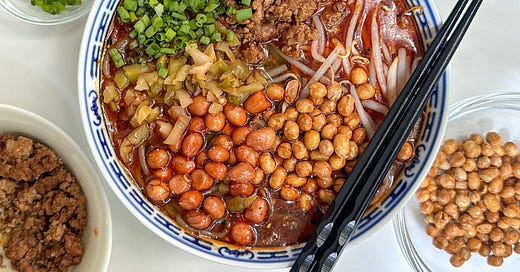


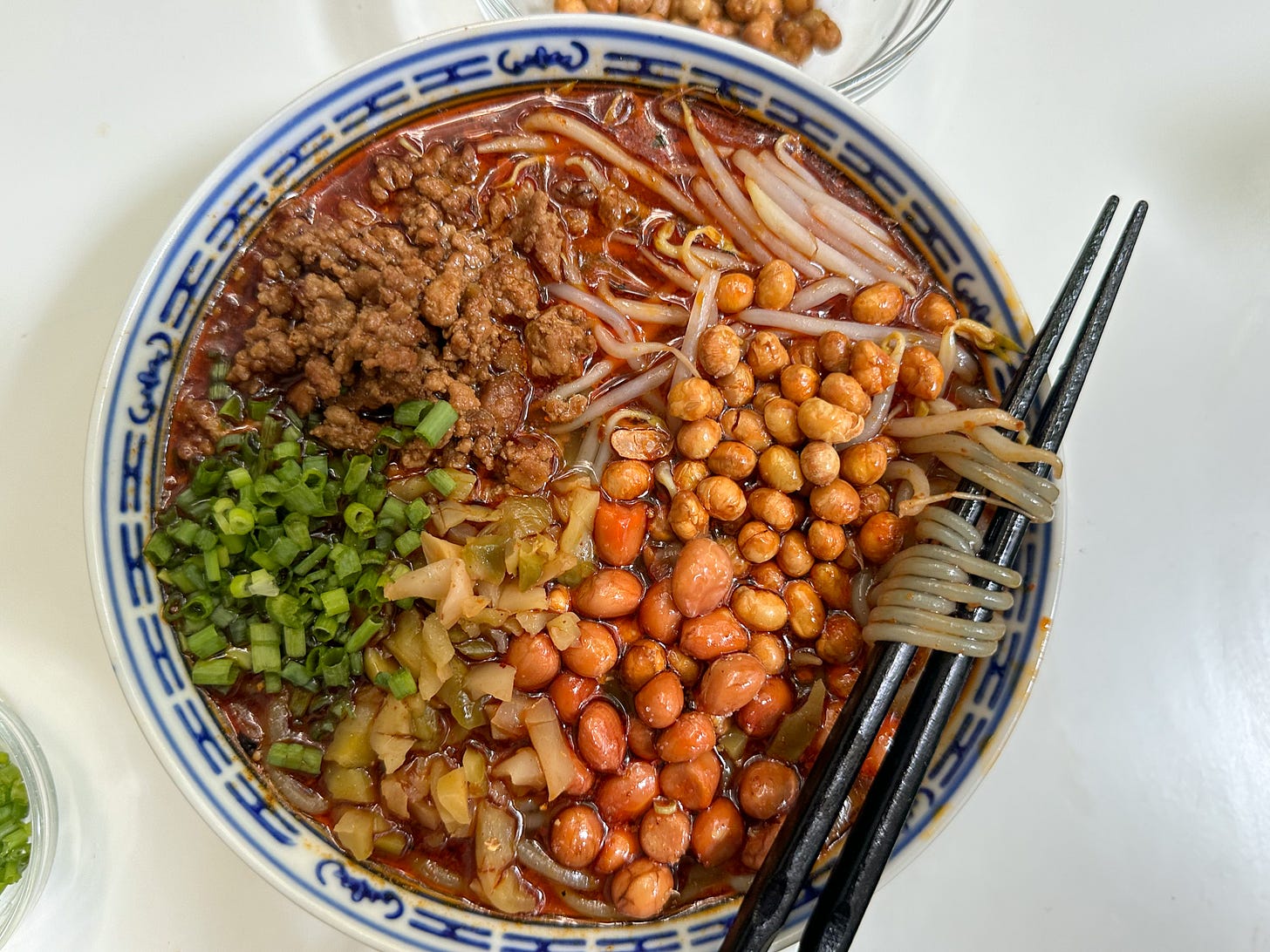
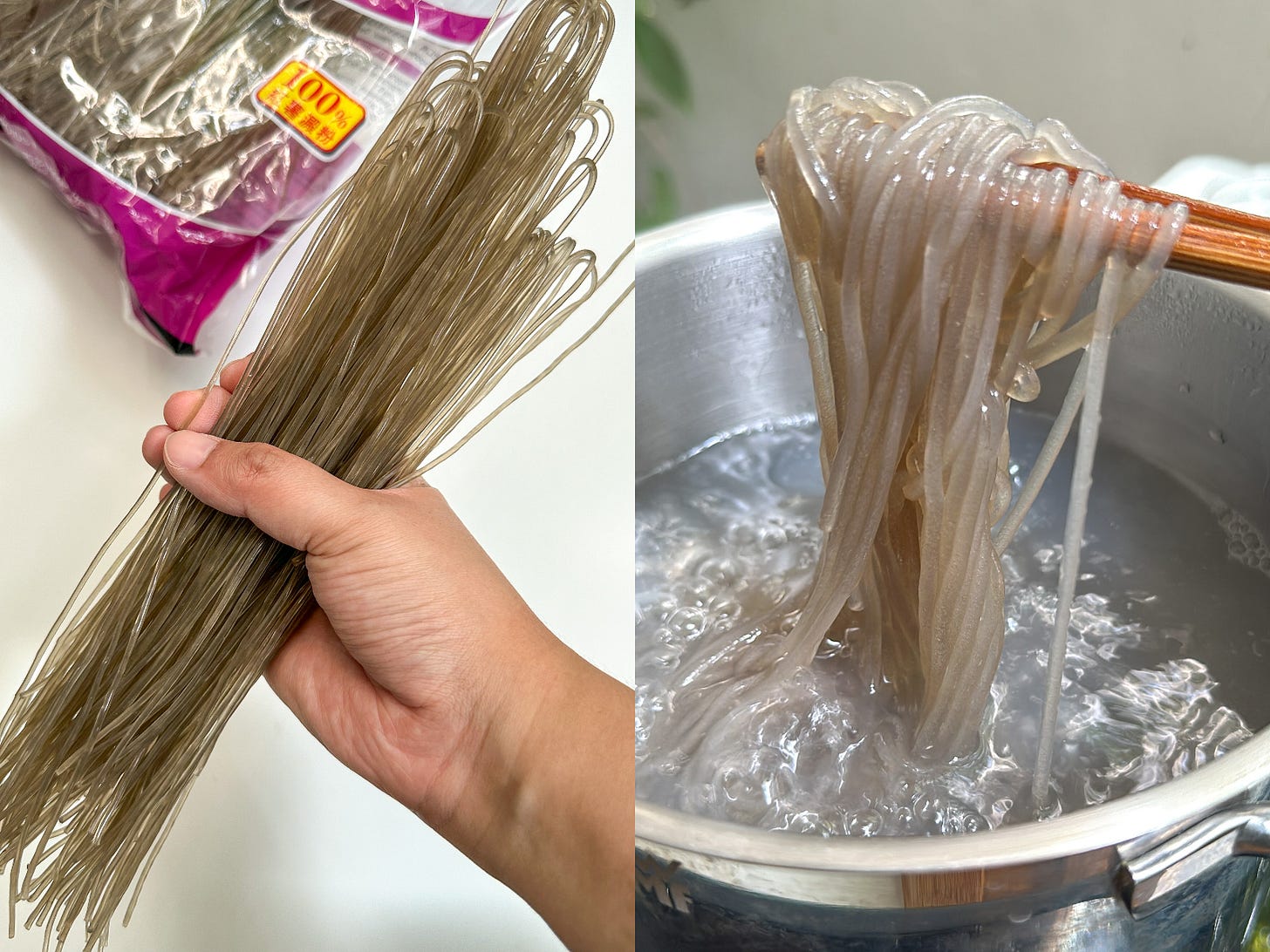

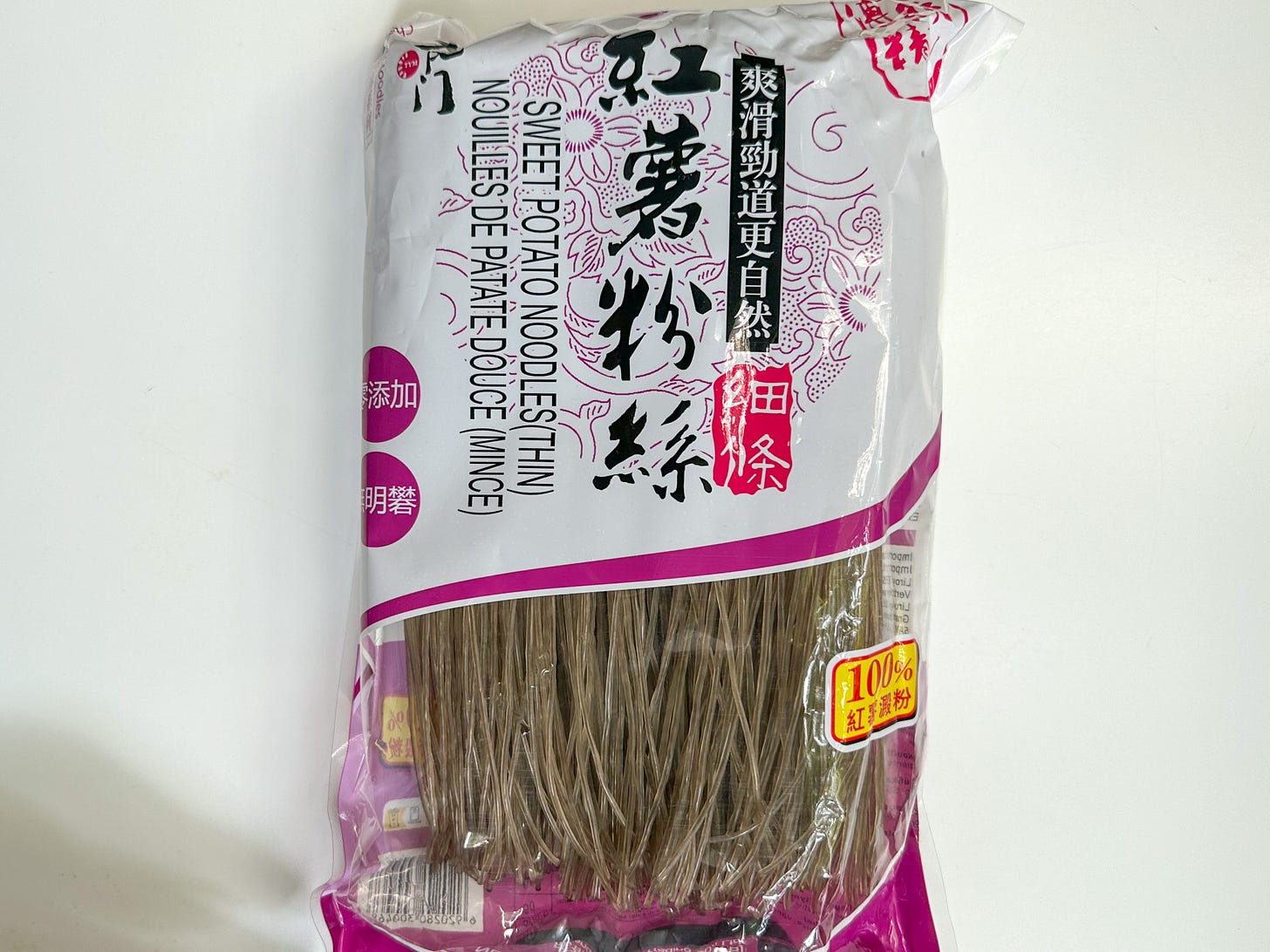
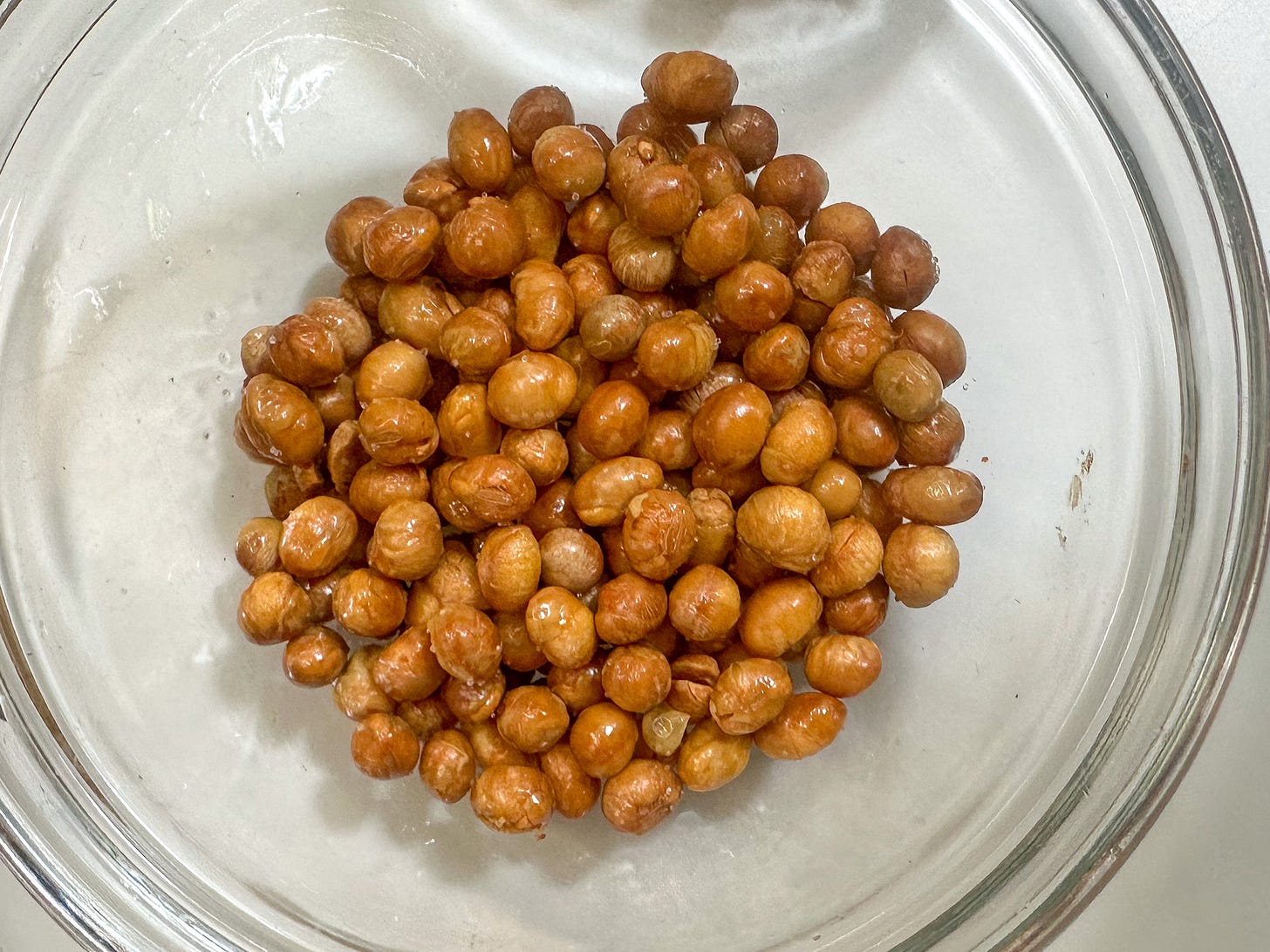

This recipe is incredible. I made it once, my family immediately became addicted, and when I went to find it to make it again I couldn't remember where I found it first time, so used a different one. Remembered you mid meal! The other recipe was good but yours is the clear winner. Thank you 🙏